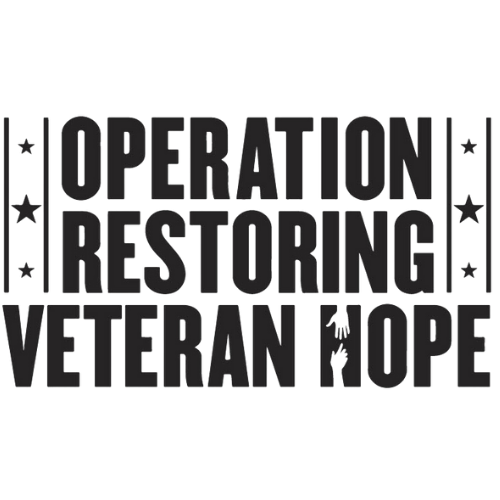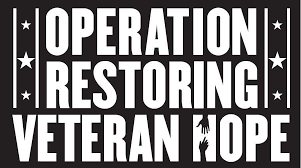Suicide Prevention
Historically, active duty service members had lower rates of suicide than the general population; however, since 2005 the rates have increased dramatically, particularly among Soldiers and Marines. From 2005 to 2009 more than 1,100 members of the Armed Forces took their own lives: an average of one suicide every 36 hours. Suicide is a major public health issue in the United States, but it is important to recognize that suicide is a preventable tragedy. With help comes HOPE!
|
DoD Component and Service |
CY 2022 |
CY 2023 | CY 2024 |
CY 2025 |
|||||||||||||
| Q1 | Q2 | Q3 | Q4 | Total | Q1 | Q2 | Q3 | Q4 | Total | Q1 | Q2 | Q3 | Q4 | Total | Q1 | Total | |
| Active Component | 75 | 88 | 90 | 80 | 333 | 91 | 89 | 83 | 102 | 365 | 91 | 71 | 75 | 67 | 304 | 71 | 71 |
| Army | 37 | 33 | 37 | 28 | 135 | 48 | 32 | 35 | 44 | 159 | 38 | 27 | 35 | 34 | 134 | 26 | 26 |
| Marine Corps | 8 | 17 | 26 | 14 | 65 | 13 | 13 | 19 | 18 | 63 | 13 | 10 | 13 | 11 | 47 | 18 | 18 |
| Navy | 14 | 23 | 13 | 21 | 71 | 17 | 21 | 12 | 18 | 68 | 22 | 15 | 11 | 12 | 60 | 15 | 15 |
| Air Force | 16 | 15 | 14 | 17 | 62 | 13 | 21 | 17 | 22 | 73 | 17 | 18 | 15 | 10 | 60 | 12 | 12 |
| Space Force | 0 | 0 | 0 | 0 | 0 | 0 | 2 | 0 | 0 | 2 | 1 | 1 | 1 | 0 | 3 | 0 | 0 |
| Reserve Component | 42 | 41 | 34 | 46 | 163 | 44 | 36 | 47 | 41 | 168 | 46 | 41 | 37 | 44 | 168 | 46 | 46 |
| Reserve | 19 | 18 | 15 | 13 | 65 | 18 | 14 | 17 | 25 | 74 | 24 | 17 | 6 | 15 | 62 | 17 | 17 |
| Army Reserve | 10 | 12 | 9 | 6 | 37 | 8 | 10 | 13 | 18 | 49 | 14 | 11 | 2 | 10 | 37 | 10 | 10 |
| Marine Corps Reserve | 3 | 1 | 1 | 2 | 7 | 4 | 3 | 1 | 2 | 10 | 3 | 1 | 1 | 2 | 7 | 2 | 2 |
| Navy Reserve | 2 | 3 | 1 | 1 | 7 | 4 | 0 | 2 | 2 | 8 | 4 | 2 | 2 | 1 | 9 | 2 | 2 |
| Air Force Reserve | 4 | 2 | 4 | 4 | 14 | 2 | 1 | 1 | 3 | 7 | 3 | 3 | 1 | 2 | 9 | 3 | 3 |
| National Guard | 23 | 23 | 19 | 33 | 98 | 26 | 22 | 30 | 16 | 94 | 22 | 24 | 31 | 29 | 106 | 29 | 29 |
| Army National Guard | 22 | 18 | 16 | 27 | 83 | 19 | 21 | 26 | 15 | 81 | 20 | 21 | 24 | 24 | 89 | 24 | 24 |
| Air National Guard | 1 | 5 | 3 | 6 | 15 | 7 | 1 | 4 | 1 | 13 | 2 | 3 | 7 | 5 | 17 | 5 | 5 |
|
DoD Component and Service |
CY 2016 |
CY 2017 | CY 2018 | CY 2019 |
CY 2020 |
CY 2021 |
||||||||||||
| Total | Total | Total | Q1 | Q2 | Q3 | Q4 | Total | Q1 | Q2 | Q3 | Q4 | Total | Q1 | Q2 | Q3 | Q4 | Total | |
| Active Component | 280 | 288 | 326 | 93 | 71 | 84 | 101 | 349 | 89 | 80 | 113 | 101 | 383 | 76 | 97 | 70 | 85 | 328 |
| Army | 130 | 116 | 141 | 32 | 37 | 34 | 43 | 146 | 37 | 41 | 52 | 44 | 174 | 44 | 57 | 31 | 43 | 175 |
| Marine Corps | 37 | 43 | 57 | 14 | 6 | 11 | 16 | 47 | 14 | 10 | 20 | 19 | 63 | 13 | 8 | 13 | 9 | 43 |
| Navy | 52 | 65 | 68 | 22 | 13 | 19 | 19 | 73 | 19 | 11 | 20 | 15 | 65 | 12 | 18 | 14 | 15 | 59 |
| Air Force | 61 | 64 | 60 | 25 | 15 | 20 | 23 | 83 | 19 | 18 | 21 | 23 | 81 | 7 | 14 | 12 | 18 | 51 |
| Space Force | NA | NA | NA | NA | NA | NA | NA | NA | NA | NA | NA | NA | NA | 0 | 0 | 0 | 0 | 0 |
| Reserve Component | 202 | 226 | 217 | 45 | 43 | 42 | 26 | 156 | 45 | 49 | 44 | 60 | 198 | 43 | 42 | 59 | 51 | 195 |
| Reserve | 80 | 93 | 81 | 21 | 16 | 17 | 12 | 66 | 20 | 25 | 13 | 19 | 77 | 15 | 14 | 21 | 24 | 74 |
| Army Reserve | 41 | 63 | 48 | 10 | 8 | 11 | 8 | 37 | 9 | 16 | 7 | 10 | 42 | 10 | 9 | 13 | 14 | 46 |
| Marine Corps Reserve | 19 | 10 | 19 | 5 | 1 | 1 | 2 | 9 | 2 | 2 | 2 | 4 | 10 | 2 | 3 | 4 | 4 | 13 |
| Navy Reserve | 10 | 9 | 11 | 2 | 2 | 3 | 0 | 7 | 5 | 3 | 2 | 3 | 13 | 3 | 1 | 1 | 5 | 10 |
| Air Force Reserve | 10 | 11 | 3 | 4 | 5 | 2 | 2 | 13 | 4 | 4 | 2 | 2 | 12 | 0 | 1 | 3 | 1 | 5 |
| National Guard | 122 | 133 | 136 | 24 | 27 | 25 | 14 | 90 | 25 | 24 | 31 | 41 | 121 | 28 | 28 | 38 | 27 | 121 |
| Army National Guard | 108 | 121 | 119 | 19 | 24 | 22 | 11 | 76 | 22 | 18 | 29 | 36 | 105 | 26 | 23 | 34 | 22 | 105 |
| Air National Guard | 14 | 12 | 17 | 5 | 3 | 3 | 3 | 14 | 3 | 6 | 2 | 5 | 16 | 2 | 5 | 4 | 5 | 16 |
Note: All figures above may be subject to change in future publications as updated information becomes available. Suicide counts (both confirmed and pending) are current as of April 15, 2025.
Are you, or someone you know, at risk for suicide?
Seek help immediately if you notice any of the following warning signs:
- Threatening to hurt or kill oneself Looking for ways to kill oneself
- Trying to get pills, guns, or other means to harm oneself
- Talking or writing about death, dying or suicide
- Feeling hopeless
- Experiencing rage, uncontrolled anger or seeking revenge
- Acting reckless or engaging in risky activities
- Feeling trapped, like there’s no way out
- Abusing drugs or alcohol
- Withdrawing from friends or family
- Having dramatic changes in mood
- Feeling like there is no reason for living, no sense of purpose in life
- Sleeping too much or too little
- Giving away posessions
-
-
Veteran-Specific Risks
- Frequent deployments
- Deployments to hostile environments
- Exposure to extreme stress
- Physical/sexual assault while in the service (not limited to women)
- Length of deployments
- Service related injury
What are factors that help prevent suicide?
- Family, friends, social support, close relationships, battle buddy
- Coping/problem solving skills
- Ongoing health and mental health care relationships
- Reasons for living
- Cultural and religious beliefs that discourage suicide and support living
Myths and Realities About Suicide
Myth: Asking about suicide will plant the idea in a person’s head.
Reality: Asking about suicide does not create suicidal thoughts any more than asking about chest pain causes a heart attack. The act of asking the question simply gives the veteran permission to talk about his or her thoughts or feelings.
Myth: There are talkers and there are doers.
Reality: Most people who die by suicide have communicated some intent, wish, or desire to kill themselves. Willingness to talk about suicide offers an opportunity to intervene before suicidal behaviors occur.
Myth: If somebody really wants to die by suicide, there is nothing you can do about it.
Reality: Most suicidal ideas are associated with underlying conditions that are highly treatable, such as depression, anxiety, or health problems. Providing treatment for these underlying conditions can save a life. The acute risk for suicide is often time-limited. It is vital to be able to help someone find a safe environment to survive the immediate crisis.
Myth: He/she really wouldn’t commit suicide because…
- he just made plans for a vacation
- she has young children at home
- he made a verbal or written promise
- she knows how dearly her family loves her
Reality: Suicidal thinking can overwhelm even the most rational person. Anyone experiencing significant suicidal thoughts must be taken seriously and referred to a health care provider who can evaluate their condition and provide treatment as appropriate.
Where to Get Help
The VA has a national suicide prevention program that identifies, screens, assesses, refers, tracks, and treats veterans at risk. In addition, many states and communities have local resources you can turn to for help.
Veterans Suicide Prevention
The National Suicide Prevention Lifeline is a free, 24-hour hotline available to anyone in suicidal crisis or emotional distress. Veterans can call the Lifeline number, 988, and press “1” to be routed to the Veterans Suicide Prevention hotline. If you prefer not to talk to a VA counselor, calling the Lifeline number will route you to one of the nine crisis centers that are accredited to operate a suicide prevention hotline.
Veterans Chat
Veterans Chat allows veterans, their families, and friends to anonymously chat with a trained VA counselor. If during the on-line chat it is determined that the person is in crisis, the counselor can take immediate steps to transfer the person to the VA Suicide Prevention Hotline, where further crisis intervention, counseling and referral services are provided. To access online chat services, please visit the https://www.veteranscrisisline.net/get-help-now/chat/
VA Suicide Prevention Coordinators
Each VA Medical Center has a Suicide Prevention Coordinator to make sure veterans receive needed counseling and services. To locate your Suicide Prevention Coordinator, please visit Find VA Locations | Veterans Affairs.




